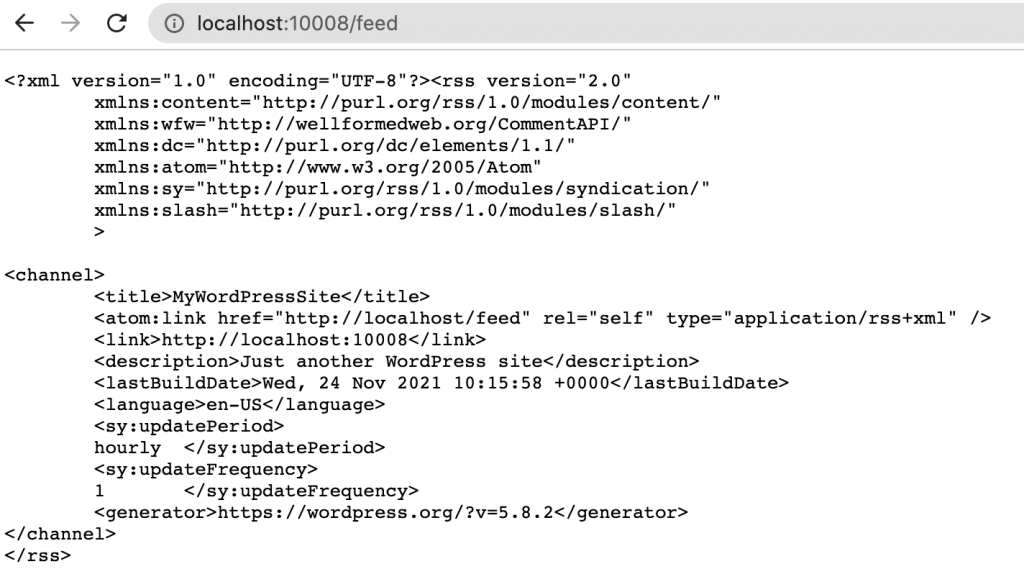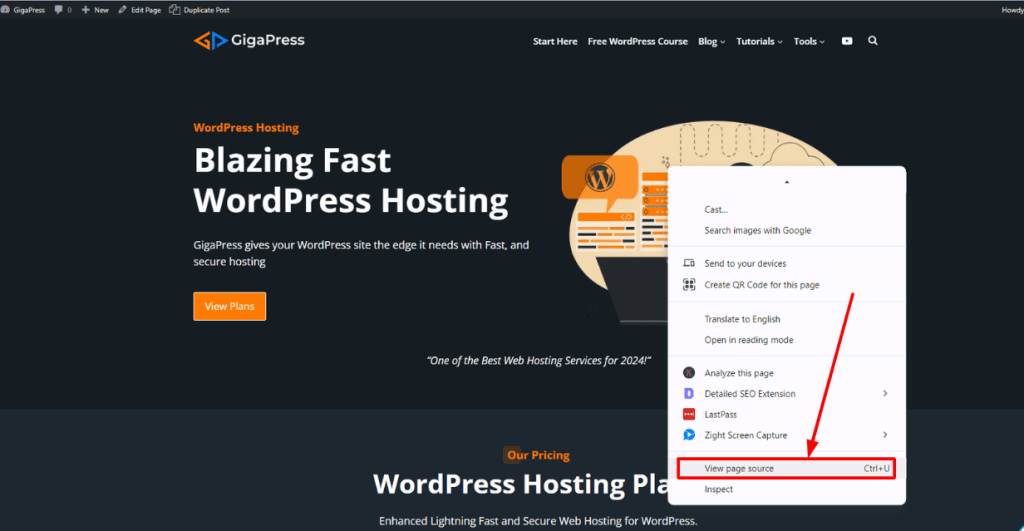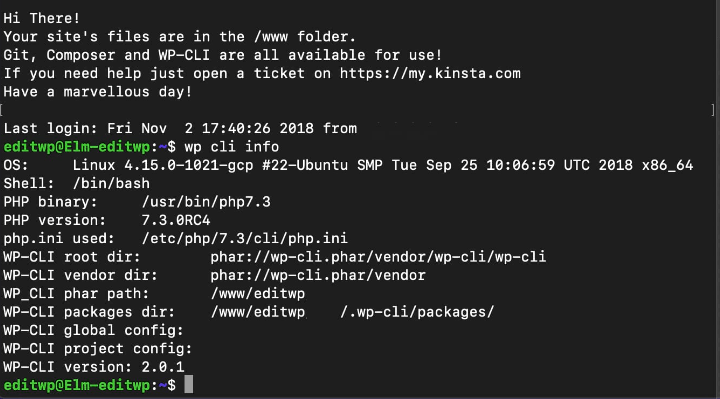With a busy update schedule, it’s crucial to stay aware of the version of WordPress that’s currently powering your site. If you don’t know this important fact—how to find your WordPress version—you could inadvertently put your website at risk.
Fortunately, there are several ways to verify your current WordPress version. You can even find this information on a third-party site. By carefully monitoring this number, you can avoid bugs, conflicts, incompatibilities, and even serious security threats.
In this postA post is a type of content in WordPress, a popular open-source content management system used for creating an... More, we’ll discuss why you may want to keep an eye on your current WordPress version. Then we’ll share five ways to retrieve this important piece of information. Let’s get started!
Why You May Want to Check Your Current WordPress Version

WordPress is a popular target for hackers. In the first six months of 2021, the Wordfence Web Application Firewall blocked over 4 billion malicious requests. Those figures should worry any website owner.
The good news is that there are steps you can take to protect your site. This includes using a Content Delivery Network (CDN) and installing a Secure Sockets Layer (SSL) certificate. You may also want to limit login attempts.
However, an outdated version of WordPress core can undermine all of your security efforts. In fact, 86 percent of hacked WordPress websites are running an outdated version, pluginA plugin is a software component that adds specific features and functionality to your WordPress website. Esse... More, or theme.
By keeping WordPress current, you’ll benefit from the latest security fixes and features. This immediately makes you less vulnerable to attack. If you want to ensure that you’re up-to-date, then you’ll need to know your WordPress version number.
In addition, some WordPress themes and plugins are only compatible with certain versions of the WordPress platform. If you install unsupported software, it may result in bugs, data loss, conflicts, and other unwanted behavior. Therefore, before installing a new theme or plugin, it’s smart to find out which versions of WordPress it supports. You can then compare this against your own version number.
WordPress is a reliable and robust platform, but no software is perfect. Occasionally, you may encounter error messages such as “allowed memory size exhausted” or internal server errors.
If you’re experiencing technical difficulties, the more you know about your website the better. This includes your version of PHP and your current version of WordPress.
In some scenarios, you may even need to know which version of WordPress a third-party site is running. For example, if you’re a WordPress agency working on a client’s site, this can be useful information to have at hand.
How To Find Your Current WordPress Version (5 Methods)
To enhance the security of your WordPress site, it’s crucial to understand how version information can potentially be accessed. Here’s a guide on how you can find and secure your WordPress version:
1. Check the WordPress Dashboard
Your WordPress dashboardIn WordPress, the Dashboard is a central hub for managing a website's content and settings. It is the first sc... More displays the version number in a few different locations. First, you can find this information by scrolling to the very bottom of any pageIn WordPress, a page is a content type that is used to create non-dynamic pages on a website. Pages are typica... More and checking the bottom-right corner:

This number is also displayed as part of the At a Glance box, which is added to your dashboard by default. You can view this box by selecting Dashboard from the left-hand menuIn WordPress, a menu is a collection of links that are displayed as a navigation menu on a website. Menus are ... More.
Alternatively, you’ll find the version number by navigating to Dashboard > Updates. Assuming that you’re up-to-date with WordPress core, this will display the current version:

Just be aware that if you’re behind on your updates, then WordPress won’t display this information. Instead, it’ll prompt you to update.
Finally, this number is included on the About WordPress screen. To access this, hover over the WordPress logo in the top-left corner. In the subsequent dropdown, select About WordPress:

You’ll find the version number at the top of this screen. Here, you can also learn more about the details of your current version.
2. View the Page Source
If you don’t have access to the WordPress admin area, you can view the version number using your browser’s developer tools. Since this method doesn’t require dashboard access, you can also use it with third-party sites.
To start, navigate to the website that you want to investigate. You can then click on any blank area:

The next steps may vary depending on your browser. However, most web browsers provide a View Page Resource or View Source option. Click on this menu selection, and it should open your site’s HTML and CSS in a new tab:

Now you can use your browser’s search feature and enter <meta name="generator". This will take you to the highlighted search phrase, which is followed by your WordPress version number:

For example, you might encounter the following: <meta name="generator" content="WordPress 5.8.2" />. This is telling you that the WordPress version number is 5.8.2.
3. Check Your RSS Feed
Another method that doesn’t require admin access is to check the site’s RSS feed. This is an online feed that enables visitors to view a site’s updates in a standardized format. Many people use RSS feeds to track multiple websites in a single, convenient news aggregator.
All WordPress websites support RSS feeds out-of-the-box. What’s more, this feed includes the site’s version number.
To view a site’s RSS feed, simply add /feed to the end of its URL. For example, if your site is www.mywebsite.com, then you’ll access its RSS feed by visiting www.mywebsite.com/feed:

You can now open your browser’s search feature and enter generator. This will take you to a line that features your current WordPress version; for example: <generator>https://wordpress.org/?v=5.8.2</generator>.
4. Access the version.php File
You can also find your WordPress version number in the aptly-named version.php file. This method requires you to connect to your server using File Transfer Protocol (FTP) via an FTP client such as FileZilla.
Inside your FileZilla application, navigate to File > Site Manager. If this is your first time connecting via FileZilla, then you’ll need to select File > Site Manager > New Site. Now you can assign a name to your site, enter your FTP login details, and click on Connect:

Once you’re successfully connected to your server, open the public_html/wp-includes directory. Inside this folder, you’ll find the version.php file:

Now, right-click on this file, and select Open. This file contains lots of information, but we’re looking for the $wp-version variable. You can either scroll until you find this variable or use your browser’s search function to locate it.
This variable contains your current version of WordPress. For example, $wp_version = '5.8.2' indicates that you’re running WordPress 5.8.2.
5. Log Into Your cPanel Dashboard
Accessing your WordPress version through cPanel is a straightforward method that ensures you stay informed about your site’s security and functionality.
You can also access the version.php file via the cPanel dashboard. This is a hugely popular tool that’s used by over three million websites. These figures equate to around 13 percent of all sites whose control panel is known. Due to this popularity, many hosting providers include cPanel in their offerings.
Here’s how you can locate your WordPress version using cPanel’s File Manager:
Accessing cPanel and File Manager
cPanel is a widely used control panel offered by many hosting providers. To check your WordPress version:
- Log In to cPanel: Access your web hosting account and look for the cPanel option. Most hosting providers prominently display this in their dashboard.
- Navigate to File Manager: Once in cPanel, locate and open the File Manager tool. This tool displays all directories and files that constitute your WordPress website.

Finding the WordPress Version File
- Locate the version.php File: In the File Manager, navigate to wp-includes/ directory.
- Open version.php: Right-click on the version.php file and select “View” from the context menu. This action opens the version.php file in a new tab.
- Identify the $wp_version Variable: Within the version.php file, locate the $wp_version variable. The number assigned to this variable indicates the current version of WordPress your site is running.
Why Checking Your WordPress Version Matters
Knowing your WordPress version is crucial for maintaining site security and ensuring compatibility with plugins and themes. Regular updates are essential to protect against vulnerabilities and leverage the latest features.
Accessing your WordPress version through cPanel’s File Manager is a valuable skill for website management. This method provides a direct way to confirm your WordPress version while familiarizing yourself with essential backend tools. Stay proactive in checking and updating your WordPress installation to safeguard your site effectively.
Finding Your WordPress Version
Knowing where your version number is displayed is essential. This information is typically found in the source code of your website and can be accessed by following these steps:
- Locate Version Information: Check the source code of your website by right-clicking and selecting “View Page Source.” Look for entries like <meta name=”generator” content=”WordPress x.x.x”> where x.x.x represents your WordPress version.
- Importance of Removing Version Information: It’s crucial to remove or hide these details as they can attract hackers targeting older, vulnerable WordPress versions.

Implementing Security Measures
To remove the version information without installing additional plugins, follow these steps:
- Edit functions.php File:
- Navigate to Appearance > Theme Editor.
- Click on the functions.php file to edit it.
- Insert the following code snippet:
- Using Plugins for Simplicity:
- Install the “Meta Generator and Version Info Remover” plugin directly from the WordPress dashboard.
- This plugin not only hides the version number but also mitigates leaks from other plugins like Yoast, Slider Revolution, and WPML.
Why Take These Steps?
Removing version info is a proactive step known as ‘security through obscurity,’ which adds an extra layer of protection against opportunistic hackers. However, it should complement other security practices such as regular updates, strong passwords, and secure hosting services implementing robust security measures.
By combining these approaches, you can significantly reduce your site’s vulnerability and enhance data security effectively.
How to Check the WordPress Version via a Website’s Frontend
Curious about which WordPress version a website is using? You can easily find this information through the website’s frontend by following these straightforward steps. This method primarily utilizes the browser’s capability to view a website’s source code.
Step-by-Step Process:
- Open the Website: Visit the homepage of the website you’re interested in checking, as it typically loads the core WordPress files.
- View the Page Source: Right-click anywhere on the page and select “View Page Source” from the context menu. This action opens a new tab displaying the website’s HTML and CSS code.
- Initiate a Search Within the Source: Press Ctrl+F (or Cmd+F on a Mac) to bring up the search function in your browser.
- Search for Version Information: Type ?ver= in the search box. This query helps in locating the version mentioned in various linked scripts or stylesheets.
- Locate the Version Number: Look for entries under tagsIn WordPress, tags are a taxonomy used to classify and organize posts. They are similar to categories, but unl... More like <link rel=”stylesheet”> that end with ?ver=x.x.x. The alphanumeric sequence following ver= usually denotes the WordPress version.
Considerations for Accuracy:
- Understanding Version Tags: Note that while finding the “generator” meta tag used to be a straightforward method to identify the WordPress version, recent security practices often recommend removing or hiding this tag to enhance site security.
- Check Multiple Instances: Since WordPress themesA WordPress theme is a set of files that determine the design and layout of a website. It controls everything ... More and plugins might also use the ?ver= suffix for their scripts, verify multiple occurrences to distinguish the core WordPress version from others.
- Updated Themes and Customizations: Some custom themes or recent updates may block the version display for security reasons. In such cases, accessing the backend might be necessary if you have administrative access.
Using this method provides a quick and non-intrusive way to check a website’s WordPress version. It’s particularly useful for web developers, designers, or marketers who need to assess compatibility or security issues. Keep in mind the limitations of this technique, especially with highly customized or secured WordPress sites.
What is WP-CLI and How to Use It to Find the WordPress Version
WP-CLI stands for WordPress Command Line Interface, a powerful tool designed for developers to manage WordPress sites directly through the command line. Similar to using the command prompt on your PC, WP-CLI allows for efficient operations like plugin management and databaseA database is an organized collection of data stored and accessed electronically. It is a crucial component of... More updates without needing a web browser.
How to Use WP-CLI to Find the WordPress Version
To identify your WordPress version using WP-CLI, follow these steps:
- Ensure WP-CLI Installation: Confirm WP-CLI is installed on your server. Many hosting services, such as Kinsta, include WP-CLI by default. Installation on unsupported systems, like certain Windows configurations, may require additional steps.
- Step-by-Step Guide:
A. Connect to Your Server: Establish an SSH (Secure Shell) connection with your server to execute commands securely.
B. Navigate to WordPress Directory: Use the command cd html to access the directory where your WordPress installation resides.
C. Check WordPress Version: Enter wp core version into the command line. This command prompts WP-CLI to display the current version of WordPress installed on your site.

WP-CLI offers a streamlined method for experienced users to manage WordPress sites efficiently through the command line. While setting up and using WP-CLI may seem complex initially, particularly on less common server environments, its ability to perform essential tasks like checking the current WordPress version proves invaluable for developers and advanced users alike.
Conclusion
It’s easy to lose track of your current WordPress version. This is particularly true if you enable auto-updates or your managed hosting provider installs the latest releases automatically. However, there are plenty of scenarios where you’ll need to know your exact version number – and perhaps even the number of a third-party website.
With that in mind, let’s quickly recap five ways to find your current WordPress version:
- Check the WordPress dashboard.
- View the Page Source.
- Check your RSS feed.
- Access the
version.phpfile. - Log into your cPanel dashboard.
Do you have any questions about how to check your version of WordPress core? Let us know in the commentsComments are a feature of WordPress that allow users to engage in discussions about the content of a website. ... More section below!
If you’re looking for fast wordpress hosting as well as done-for-you updates such as How To Find Your Current WordPress Version, check out our hosting packages by clicking the button below:





